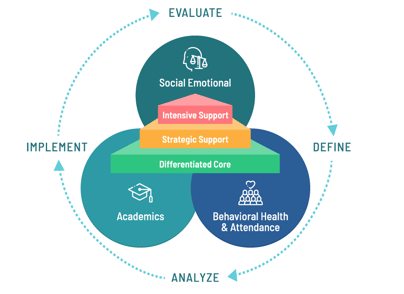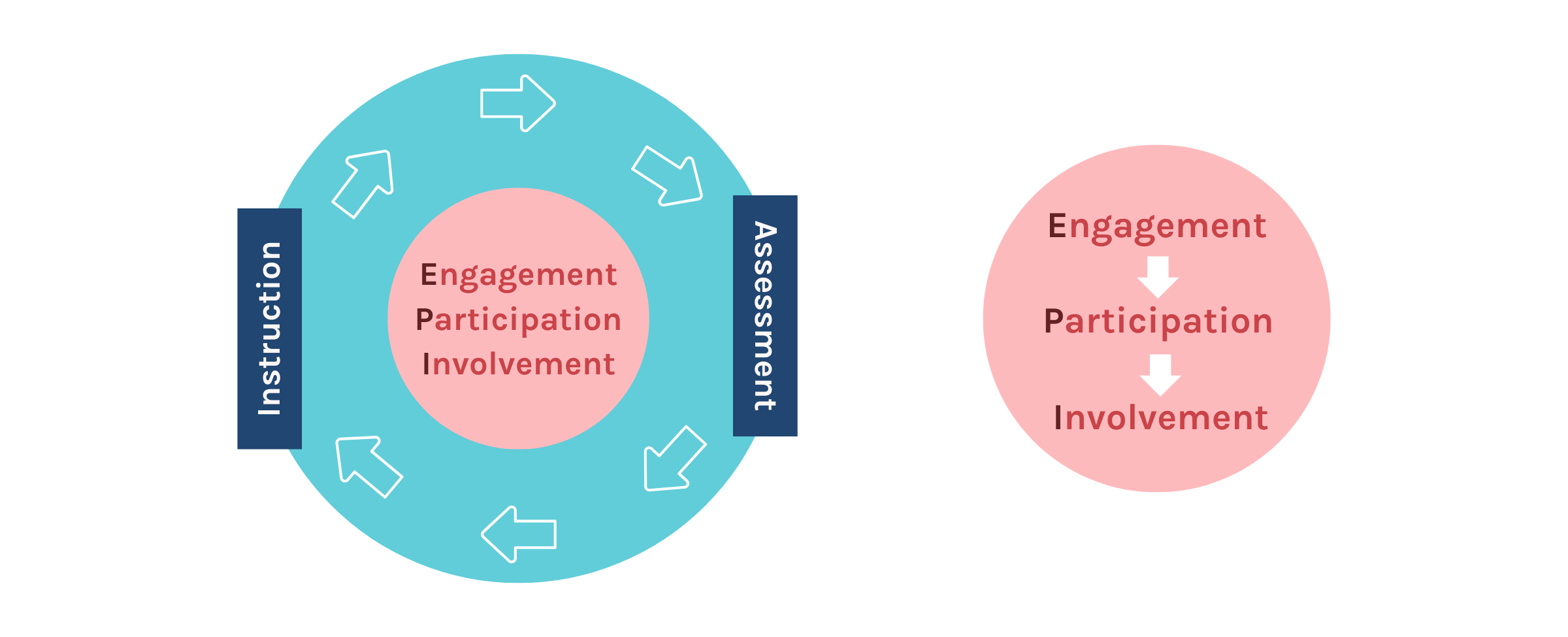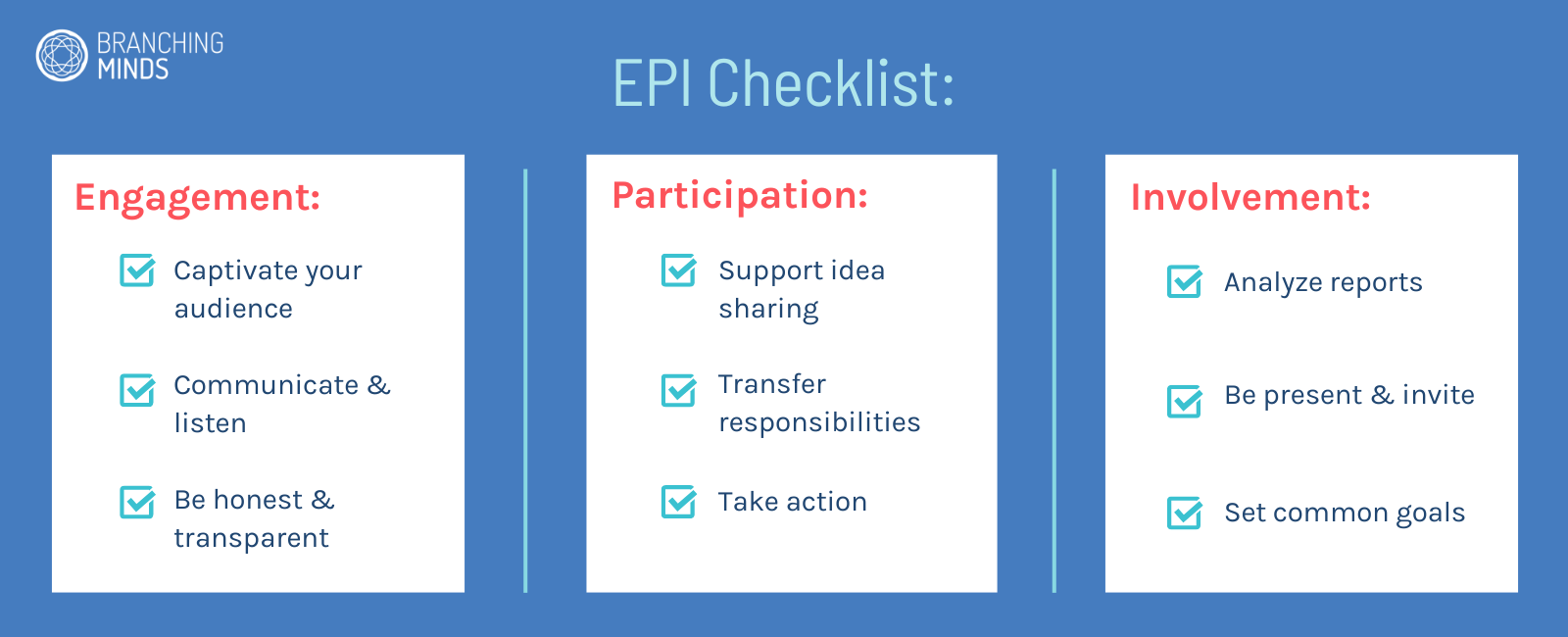
How To Use the EPIcenter of MTSS — Engagement, Participation, and Involvement — To Drive Progress for Your Students
Don’t you hate being asked, “Are you paying attention?” For some reason, that question always sends me back to elementary school (when, in fact, I was paying attention). But the question also makes me wonder…what is “paying attention?” Is it engagement? Participation? Involvement? And how do these concepts relate to each other?
As educators, it is important to consider what we seek from our stakeholders—our team members, our students, our families, and most importantly, ourselves. Paying attention to the meetings, the benchmarks, the surveys, the students, and the data is part of our responsibilities, but do we want to be someone who is just there to pay attention? Or do we long for more? I know I do. I want to be engaged with those around me and the world. I want to participate and take an active role in life. And I want to be involved and feel a sense of belonging and value.
What does this kind of engagement, participation, and involvement look like within a Multi-Tiered System of Supports (MTSS)? And how do we achieve it?
Leveling Up Attention

MTSS is the framework that wraps around the entire student body and uses data-driven problem-solving to address academic and non-academic (attendance/social-emotional) needs. Within it, there is a cycle of processes, including assessment, multilevel prevention systems, progress monitoring, collaboration, and data-based decision-making.
With any framework, it is always essential to pay attention to the details, but we are looking for more. What we seek is the EPIcenter of MTSS - Engagement, Participation, and Involvement that can drive progress and keep our system running like a well-oiled machine.
How Do We Facilitate Engagement, Participation, and Involvement as the EPIcenter of MTSS?
The prerequisite for EPI is a common goal shared by all stakeholders—creating the conditions where all students can thrive, including those with learning challenges. When we effectively communicate this vision of MTSS we will have more people willingly working together…and more students getting supported.

|
|
Engagement |
-
Captivate
To do this, we need to excite and engage those we speak to, whether speaking to our staff, students, or community and family members. Simply put, we must captivate our listeners’ attention and work towards buy-in from all parties to succeed.
At this stage of our cycle, we must help shift mindsets to deeply thinking about MTSS, and not just thinking about it as an exercise in compliance. Instead, when we captivate our stakeholders by discussing the WHY of MTSS, we get to emphasize how MTSS supports each and every student. This captivation helps all to find a deeper understanding and creates excitement about the work they are embarking upon within MTSS. -
Communicate and Listen
It’s self-evident that communication is a two-way street. We have all noticed at one time or another how hard it is to have a conversation with someone and see that they are not paying attention—you do not get very far into making your point. As a result, we want our students, our teachers, our administrators, our families, and our communities to understand that they will be listened to and feel comfortable communicating. This means creating expectations about listening to others as they share their hesitations and concerns.
When we create a culture that utilizes a two-way communication street, we can better tackle challenges that may present themselves down the line, and increase the likelihood of meeting all students’ needs—our goal with MTSS.
-
Be Honest and Transparent
We learn at an early age what honesty is, and as we grow, we implicitly understand how to recognize dishonesty or a lack of transparency. To truly engage others, it is essential to set expectations, model honesty, and operate with transparency. Credibility is critical when delivering messages of why we must do the work to support all students, and without honesty and transparency, credibility is blown.
To compel all stakeholders to complete the critical work of meeting our student’s needs, we need to rely upon a culture where all feel comfortable and safe in sharing ideas. This creates trust and engagement, leading to deeper participation in the critical work within MTSS.
|
Check out these resources: |
|
|
Participation |
-
Support Idea Sharing
All stakeholders must participate in learning, share their ideas, and try new things. This means hearing the thoughts of others even when you know they may present an issue. People will be more likely to share when they know their voices will be heard. And, there must be freedom to fail and to have an open discussion about why. The failure of an intervention or approach provides valuable information. It is important to know what doesn’t work.
These learning experiences are part of progress, and allow all to actively participate in MTSS without fear. We want to support these efforts because this participation makes our “wheels turn” and leads to excitement, buy-in, and, ultimately, involvement.
-
Transfer and Share Responsibilities
We cannot do it all, nor should we. And if participation is what we are seeking from others, then we have to transfer and share responsibilities so that others can take a more active role. Letting go and allowing others to provide targeted assistance allows them to tap into and grow their strengths.
A word of caution, this may mean things do not always go as planned, and may even mean allowing others to fail. For example, this could mean that a plan may not be written as you would have written it or an intervention may be implemented differently than you would have done so, and letting go of old routines.
-
Take Action
Taking action may look different for various team members. Taking action may mean analyzing data, collaborating about student performance, or providing an intervention for a student or group of students. In any of these examples, there needs to be clear communication and listening about the next steps needed to serve our entire student body.
|
Check out these resources: |
|
|
Involvement |
-
Analyze Data
We want others to get involved in the data analysis process. Isn’t this what we have been working towards with MTSS—obtaining data on students to help move them forward? But how often in education are we inundated with data, to the point that we just take it at the surface level? This is where we seek more than just engaging and participating. What we want here is deep involvement. We want to see people engaging with the data, participating by unpacking it, and now becoming involved by decoding it and using it to reflect on past instruction and drive future instruction. Here is where we invite others to be involved in using data to make critical decisions together.
-
Be Present and Invite
This level of involvement needs to be a balanced give-and-take between parties. We need to invite all parties to the table and be present when in the presence of others. We need administrators to be involved in holding others accountable and making decisions that help students. We need staff involved in making plans and groups and utilizing reliable resources to support their students. We need students and families who take ownership of their own goals. We don’t just want people moving through the motions. We want to inspire others through their involvement to make the change. We want everyone on our team to be invited and present at the EPIcenter of MTSS.
-
Set Common Goals
The reason MTSS exists is to support students. Therefore, setting common goals is critical to getting everyone involved. Here, others can take actionable steps to support their colleagues and students. These goals should be specific to the district and/or school goals as well as teacher and family goals. Avoid setting goals that are too big or too vague. Instead, start slowly with clear outcomes so that there is a sense of accomplishment as those goals are met, then build toward larger goals. Remember to celebrate big and small wins. Give credit when credit is due and acknowledge the hard work involved.
|
Check out these resources: |
EPICenter CHECKLIST
EPI is the engine in a good MTSS framework—it takes the idea of supporting all students and turns it into action. When the EPIcenter is strong, our stakeholders are engaged, participating, and involved in all aspects of MTSS, including the planning processes, implementation plans, and post-data decisions that are being made. We are ensuring that MTSS will deliver the support needed by our most important stakeholders—our students.
Here is an EPI Checklist that can be used to drive Engagement, Participation, and Involvement within MTSS in your school or district.
EPI Checklist:
Engagement:
Captivate your audience
Communicate & listen
Be honest & transparent
Participation:
Support idea sharing
Transfer responsibilities
Take action
Involvement:
Analyze reports
Be present & invite
Set common goals
Making EPI Second Nature = More Growth Opportunities for Your Students
The deeper the level of EPI you can inspire in those around you, the more growth opportunities your students will have. With MTSS, we want it ALL! We want the whole school community engaged in the work we are doing. We want each member to be an active participant in meaningful data discussions, reports, lessons, and interventions. We want to instill a sense of involvement and ownership in MTSS so that it becomes second nature to support one another in this work.
I think we can all agree that this is a lot more than just paying attention!

|
Learn more about engagement, participation, and involvement in MTSS with these resources:
|
References
https://www.branchingminds.com/blog/student-engagement-remote-in-person
https://thoughtexchange.com/blog/engagement-vs-involvement/

Dr. Jessica Shackil
Jessica Shackil has over ten years of experience in the elementary classroom. She is certified in general and special education and holds a doctoral degree in K-12 educational leadership. She also works in higher education as an adjunct professor. Jessica is passionate about sharing her educational experiences in her more recent role as an educational consultant. She currently works in several New Jersey districts where she supports teachers and administrators. She strongly believes that all students can be successful and that learning should be fun.
Related Posts
Tagged: MTSS Practice




Comments (0)